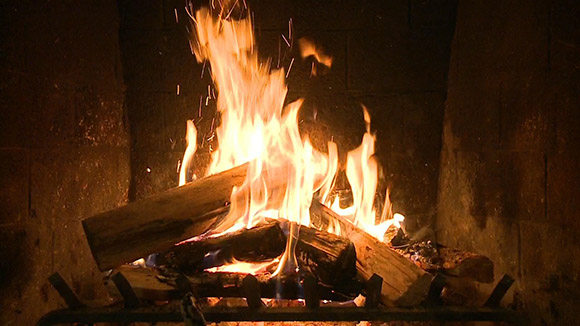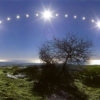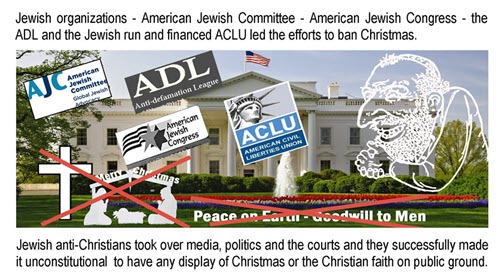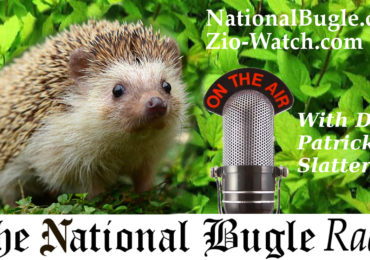The Winter Solstice—celebrated on December 21 each year—which gave rise to the celebration known around the world as Christmas, is more than just the shortest day of the year. It is in fact a symbol of the antiquity of European civilization itself.

The Winter Solstice is the day upon which, in the Northern Hemisphere, there is the least amount of daylight. This is because of the alignment of the earth on its axis, and its position relative to the sun.
Conversely, the longest day of the year in the Northern hemisphere occurs on June 21, when the opposite alignment effect plays itself out.
In the Southern Hemisphere, exactly the opposite scenario plays itself out: the longest day is December 21, and the shortest day is June 21.
The importance of these days lies in the fact that they are directly in the middle of the seasons of winter and summer.
In the Northern Hemisphere, from December 21 onwards, the days start getting longer until the longest day in summer (June 21), while the opposite process occurs in the Southern Hemisphere.
Ancient Europeans were highly educated and possessed advanced astronomical skills which allowed them to accurately map out the change of the seasons, and develop advanced calendars.
In this way it became natural to have celebrations at the turning of the seasons: at the middle of the northern winter, Europeans would have celebrations marking the halfway point of winter. The Roman feast of Saturnalia, honoring the God Saturn, was a weeklong December feast that included the observance of the winter solstice.
The ancient Romans also celebrated the lengthening of days following the solstice by paying homage to the god of light, Mithra.
Ancient Greece, and all of northern Europe, operated on a solar calendar, with the new year starting on the winter solstice.
When the Romans invaded Greece in the fifth century BC., they realized the advantages of a solar calendar, and in 153 B.C. the Roman New Year’s Day was moved to January first—the month being named after the two-faced god of doorways and new beginnings, Janus.
In northern Europe, the Druids and Vikings built huge bonfires on hilltops on the longest night of the year, with the intention of giving additional strength to the sun god in his nightly battle with the forces of cold and darkness.
When the sun finally did come up a little earlier on the day after the solstice, there was a great celebration amongst these Northern peoples—the celebration of light over darkness.
These feasts would mark the fact that they had survived the winter, and would take the place of large feasts, gathered in halls with large log fires, accompanied by the exchange of gifts.
Thus the festivals around the Winter Solstice were well-established in Northern and Southern Europe many thousands of years ago.
The advent of Christianity in Europe, which only occurred in the south during the third century AD, and only reached the last part of Northern Europe around the year 1100 AD, saw the Church Fathers at first highly hostile to this clearly pagan festival.
Along with the pagan celebration of Spring (which celebrated the rebirth of life through the goddess Eostre, or Ostara, with her symbols of fertility being the egg and the rabbit), the Church Fathers at first south to stamp out the celebration of the Winter Solstice.
The celebrations of the Winter Solstice and Ostara were outlawed by the church dozens of times between the years 400 AD and 1900 AD, but the ingrained nature of the festivals proved impossible to eradicate.
As a result, the Church started integrating these pagan festivals in the Christian calendar, arbitrarily linking biblical events with the pagan rituals.
In this way, the Winter Solstice became “Christmas,” or ‘Christ’s Mass,” and the celebration of the Spring Goddess of rebirth Ostara became “Easter,” or the resurrection of Jesus Christ—even though there is no indication in the bible of the dates of those events.
Furthermore, many of the rituals the whole world now associates with those events, remained firmly pagan European in origin. The fir tree, or Christmas tree, is distinctly Northern European in origin, as is the Yule log, the fire, the giving of gifts.
In similar vein, the tradition of the Easter eggs and the Easter rabbit come directly from the pagan ritual of new life and Spring of Ostara.
Even so, the integration of these festivals was resisted by devout Catholic and Protestants alike.
All Christmas activities, including dancing, seasonal plays, games, singing carols, cheerful celebration and especially drinking were banned by the Puritan-dominated Parliament of England in 1644, with the Puritans of the American colony in New England following suit.
It is little known that Christmas was outlawed in Boston, and the Plymouth colony made celebrating Christmas a criminal offense.
In England, the ban on the holiday was lifted in 1660, when Charles II took over the throne. However, the Puritan presence remained in New England and Christmas did not become a legal holiday there until 1856. Some schools still held class on December 25 until as late as 1870!
The origins of the Winter Solstice therefore are far older than what many people think—and in fact are actually a reflection on the antiquity of European civilization itself.
Furthermore, the spirit which underlies both the Solstice and its offspring Christmas, is one of brotherly love, family, goodwill and charity.
This is in marked contrast to the Jewish celebration of Hanukah, which is celebrated at the same time: Hanukah is a celebration of the murder of non-Jews and those few Jews who considered assimilating with non-Jews.
Nothing better illustrates the differing nature of European civilization and Jewish Supremacism than the festivals of the Winter Solstice/Christmas and Hanukah: the European celebration is of love and kindness, while the Jewish Supremacist “celebration” is of murder and hatred towards all non-Jews.





